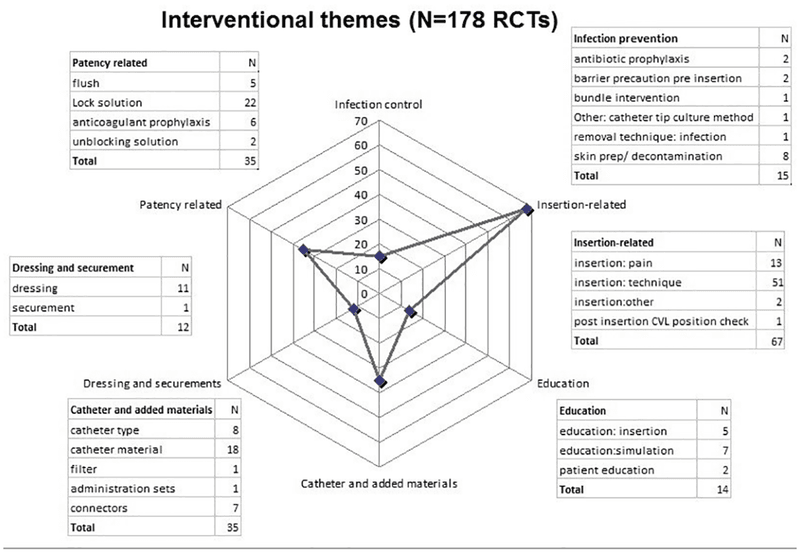Scoping the evidence for CVADs
)
Central venous access devices (CVADs) provide access to the greater vascular system to administer therapy that is contraindicated to be given peripherally, for longer term treatment, and for venous monitoring and blood sampling.
As clinicians, we come across these devices on a daily basis. We also see CVAD complications and failures, such as bloodstream infections, obstruction, thrombosis, catheter migrations, and others. Effective interventions can prevent many of these complications.
But the evidence can be confusing, especially for non-researchers, who might have questions such as:
- How do I know what has already been studied extensively?
- How do I know where evidence is lacking?
- How many studies are out there for dressings?
- How can I find best evidence for flushing?
We completed a scoping review to find out what the best evidence available for CVADs. The review examined all RCTs conducted in CVADs in the past 10 years. Here's the link to the Open Access article in PLosOne: http://journals.plos.org/plosone/article?id=10.1371/journal.pone.0174164.
In a nutshell, many studies included in the review (67 RCTs, 38%) focused on effective CVAD insertion practices, however, comparatively few evaluated maintenance strategies, such as infection prevention (15 RCTs, 8%) and dressing and securement (12 RCTs, 7%). Important areas such as securement, patient education, and bundled interventions lack RCT data. Additionally, paediatrics and neonates have been understudied across all CVAD types.
We hope this will help your evidence-hunting!
My fellow researchers, come and help fill the gaps!
| Tags:AVATARIV managementvascular access devices |








